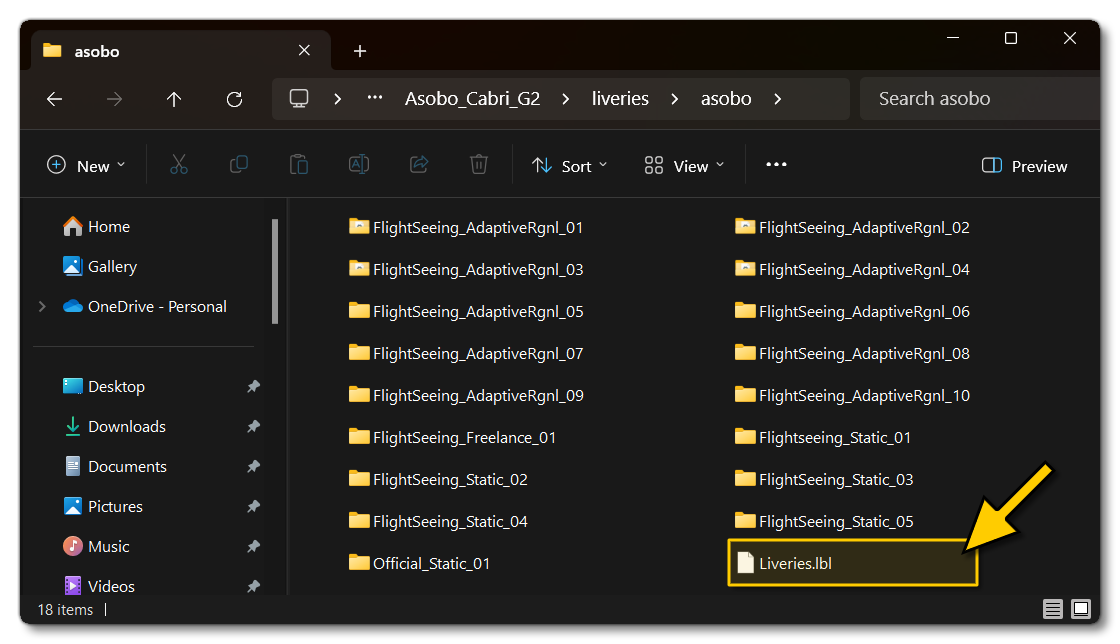liveries.lbl
This file needs to be placed in the Liveries folder, at the top level, as shown in the example image below:

Currently this file must be created manually, and is used to list all the available liveries and link them to assets in the aircraft package, as well as situations in the simulation, so that the correct livery is shown at all times. For example, say you have designed 4 liveries for flightseeing activities, and each one is supposed to be used in a specific region. In this case, you list all four liveries in this LBL file, and assign them a series of countries as labels. These labels will be parsed by the simulation and the livery that is applicable for where the activity is taking place will be chosen.
NOTE: Currently this file is not obligatory unless you wish to use the adaptive systems based on geo-location. However, we recommend including this file to "future-proof" your packages.
Before listing the different keys that the LBL file requires, here is an example showing a single livery definition which can be used for reference when setting up your own:
{
"LabeledContainers": [
{
"Name": "Flightseeing_AdaptiveRgnl_01",
"ContainerTitle": "H125 Passengers",
"LiveryTitle": "Flightseeing_AdaptiveRgnl_01",
"Labels": [
{
"Key": "Country",
"Values":["Albania, Austria, Belarus, Belgium, BosniaHerzegovina, Bulgaria, Croatia, Czechia, Denmark, Estonia, Finland, Greece, Hungary, Ireland, Italy, Kosovo, Latvia, Lithuania, Luxembourg, Moldova, Montenegro, Netherlands, Norway, Poland, Portugal, Romania, Serbia, Slovakia, Spain, Sweden"]
}
]
}
]
}
"LabeledContainers"
This is the top level key of the liveries.lbl file, and must be included otherwise the file will be invalid. The value for this element is an array, where each object in the array is a single livery definition containing the "Name", "ContainerTitle", "LiveryTitle", and "Lables" keys.
"Name"
This key expects a single value, which is a string defining the name of the livery. This name is purely orientative and is not used in the simulation. It is simply to help clearly identify each livery object within the file.
"ContainerTitle"
This key expects a single value, which is a string defining the container title of the Preset that the livery will be applied to. This acts as an initial filter on the available liveries and permits you to "group" one or more liveries to be used for specific activities. The actual title string you should give is the one used in the title parameter of the aircraft.cfg in the preset
"LiveryTitle"
This key expects a single value, which is a string defining the folder name of the livery. Livery folders should be in the same location as the liveries.lbl file for the reference to find them.
"Labels"
This key expects an array of one or more objects, where each object is a "key" and "value" pair. Label keys are used to further filter the list of liveries available such that only one is possible under any given situation (after the initial filtering has been done by the container and livery titles).
"Key"
This key is used to define a key parameter to be used as a filter to find the correct livery to use.
"Value"
This is an array of values that accompany the given key to generate the filter used to find the correct livery to use.
Related Topics